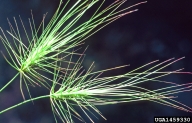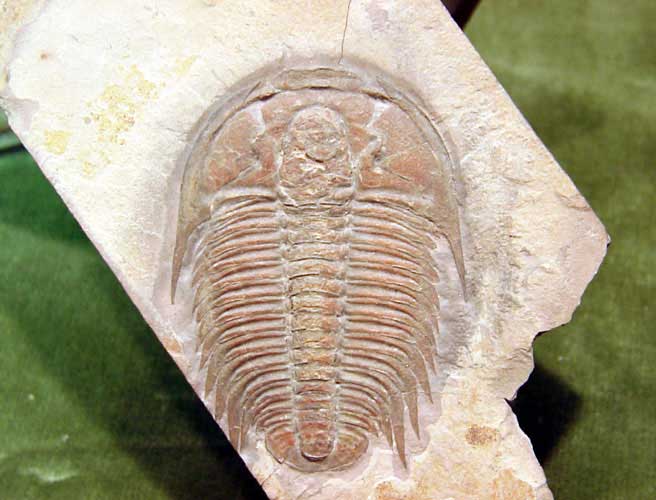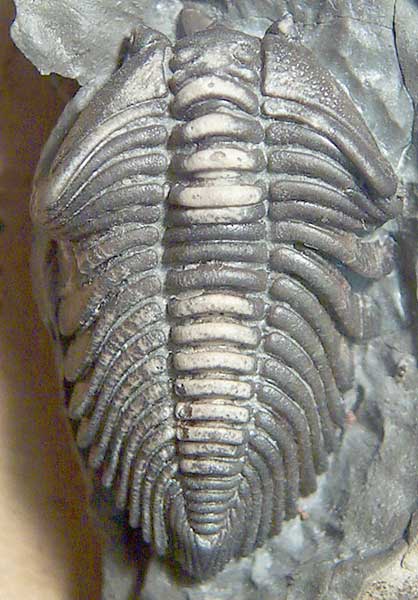Utah’s Glacial History
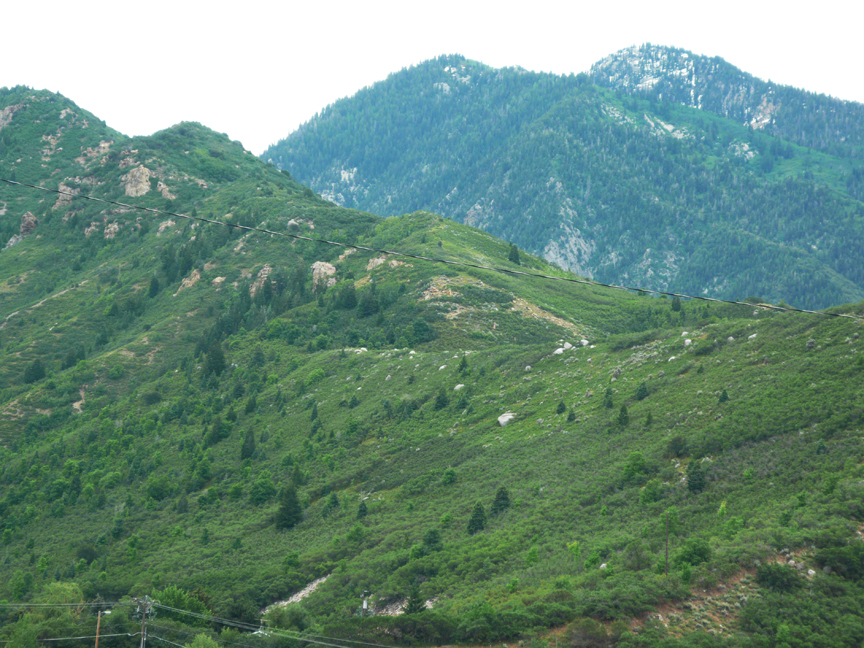
Photo Courtesy & Copyright
Mark Larese-Casanova, Photographer
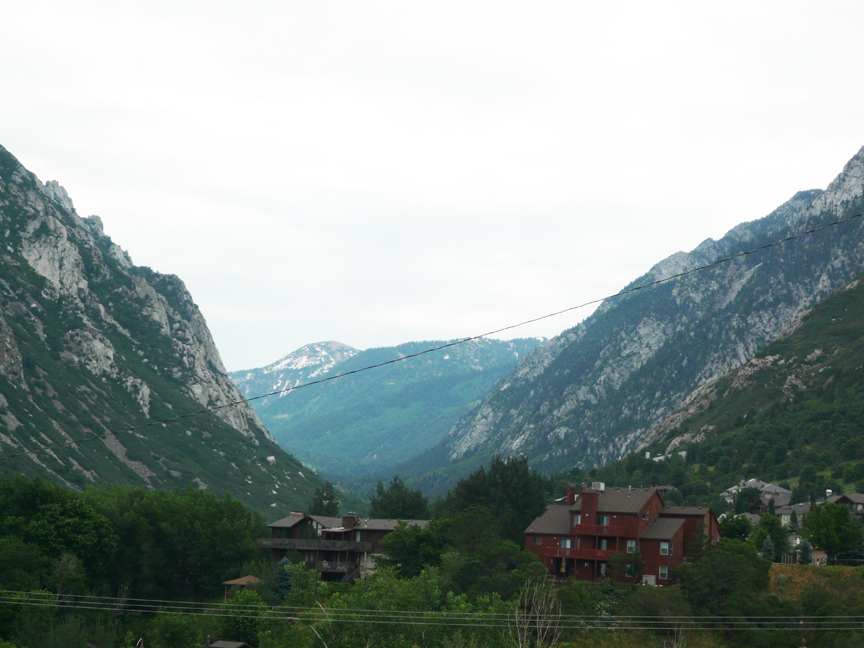 Little Cottonwood Canyon
Little Cottonwood CanyonPhoto Courtesy & Copyright
Mark Larese-Casanova, Photographer
Hi, this is Mark Larese-Casanova from the Utah Master Naturalist Program at Utah State University Extension.
It is amazing to see just how much of an impact the large amount of snowfall from last winter still has on the annual cycle of nature. Of recent note, wildflower blooms in the mountains seem to be at least 2-3 weeks behind normal schedule. Hiking through snow in late July had me thinking about colder times when Utah’s mountains were covered with ice that flowed as glaciers.
The most recent period of glaciation in Utah occurred between 30,000 and 15,000 years ago when Utah’s climate was, on average, up to 30?F cooler. At times during this period, much of the western half of Utah was covered by Lake Bonneville, which contributed tremendous amounts of moisture as snow throughout Utah’s mountain ranges. As the snow accumulated at high elevations, its sheer weight caused it to recrystallize into ice. Once the masses of ice became heavy enough, gravity pulled them down slope, carving out characteristic U-shaped valleys.
At the top of the valleys, where the glaciers formed, we can often find large, bowl-shaped cirques. In the Wasatch Range, the Little Cottonwood Canyon glacier formed at the top, creating Albion Basin, and reached the mouth of the canyon where calved icebergs into Lake Bonneville. The Uinta Mountains contained such large glaciers that even many of the mountain peaks are rounded.
As temperatures warmed during the end of the last ice age, glaciers receded and left behind large piles of soil and rocks, known as moraines. Terminal moraines at the end of a glacier’s path, can act as natural dams to create lakes. Enormous boulders, known as glacial erratics, can often be found discarded along canyons.
While glaciers don’t currently exist in Utah, there are several permanent snowfields in shaded high mountain areas. So, if you’re feeling a little nostalgic and missing that extra long winter we had this year, you still a chance to hike up above 9,000 feet and cool your toes in the snow.
For Wild About Utah, I’m Mark Larese-Casanova.
Credits:
Images: Courtesy & Copyright Mark Larese-Casanova
Text: Mark Larese-Casanova, Utah Master Naturalist Program at Utah State University Extension.
Additional Reading:
Utah Geological Survey https://geology.utah.gov/surveynotes/gladasked/gladglaciers.htm
Parry, William T. 2005. A Hiking Guide to the Geology of the Wasatch and Uinta Mountains. University of Utah Press.
Stokes, William Lee. 1986. Geology of Utah. Utah Museum of Natural History.
Dragonflies
Audio: mp3 
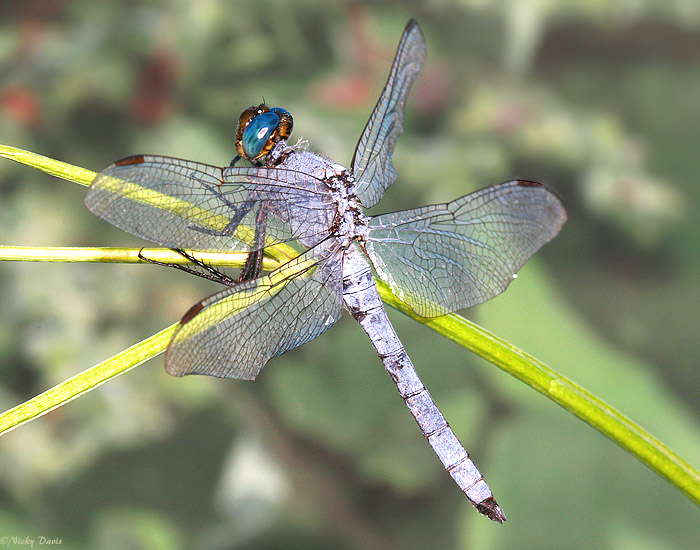
Western Pondhawk
Erythemis collocata
Copyright © 2006 Nicky Davis
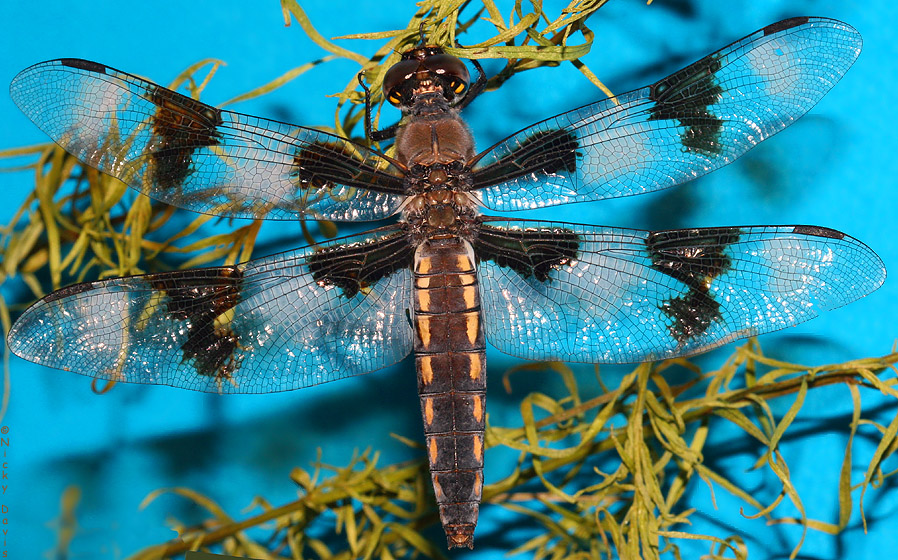 Eight-spotted Skimmer, Female
Eight-spotted Skimmer, Female
Libellulidae Libellula forensis
Copyright © 2006 Nicky Davis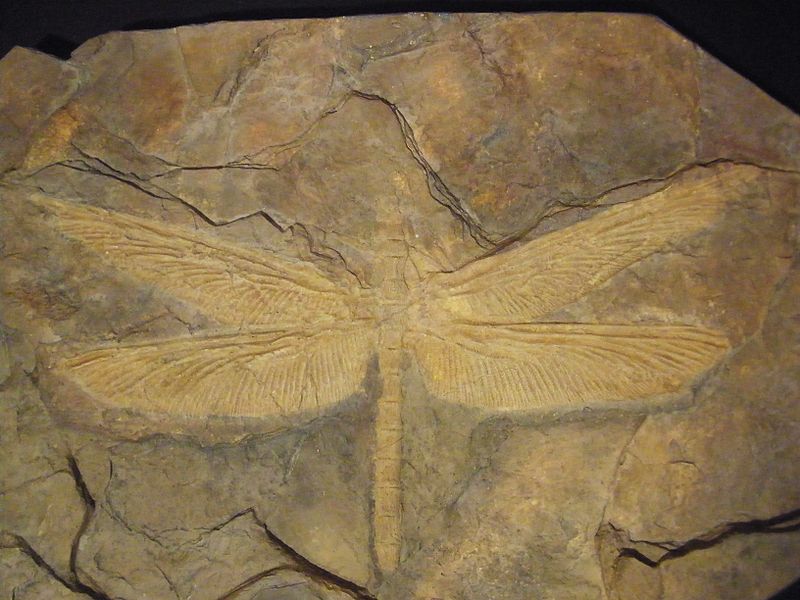 Carboniferous ancestor of dragonflies,
Carboniferous ancestor of dragonflies,
fossil Meganeuridae indet.
from Commentry in France,
Museum des Sciences Naturelles,
Brussels, Belgium. The griffenfly belonged to the genus Meganeura.
Courtesy WikiMedia
Ghedoghedo, Contributor
Available under the GNU Free Documentation License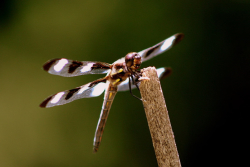 Twelve spot skimmer, Courtesy US FWS, Rick L. Hansen, Photographer
Twelve spot skimmer, Courtesy US FWS, Rick L. Hansen, Photographer
Hi I’m Holly Strand.
Have you noticed there are a lot more dragonflies this year? It’s a banner year for them. The combination of a rainy spring and plentiful snowmelt created excellent nursery conditions for dragonfly eggs and emerging larvae. Any kind of freshwater habitat will do—streams, rivers, lakes, canals, and farm ponds, and– this year– temporary wetlands left by floodwaters.
After the final molt by larvae, newly minted adult dragonflies leave the water to go forage. Depending upon the species, they may fly several miles in search of food. That’s why we’re seeing these colorful aviators aloft in forests and fields far from water.
Dragonflies are among the most ancient of winged insects. The fossil record shows evidence of ancestors in the carboniferous period –over 300 million years ago! That’s way before the dinosaurs came to be.
By the end of the Paleaozoic, a dragonfly relative called the griffenfly patrolled the airways. The griffenfly –like the modern dragonfly–was a voracious predator with enormous compound eyes, large toothed mandibles and superb flight cabilities. The wingspan of this insect behemoth was 28 inches! In fact there were lots of giant insects during this period. Nowadays, the oxygen delivery system in insects prevents them from getting very large. But back then, expansion of land plants produced huge volumes of oxygen through photosynthesis. Levels greatly exceeded the amount in the atmosphere today. Because of their unique physiology—insects could take advantage of this oxygen surplus –and grew extremley large.
But once the oxygen levels dropped, the griffenfly and other giants disappeared. I’m seriously glad they aren’t still around. Imagine having to swat at a pesky 2 ½ foot wide dragonfly!
True dragonflies (not just relatives) made their first appearance in the late Paleozoic. The number of species soared quickly. Today, we know of approximately 3000 dragonfly species worldwide.
Thus the dragonfly is a premier example of evolutionary success. Many other living creatures that date back 100s of millions of years aren’t doing so well now. Take, for example, gingkos, horseshoe crabs, or coelacanths. They are mere relicts of past lifeforms –evolutionary stubs if you will. But dragonflies were successful in the past and remain highly competitive in the present. You can bet they will be here for a long time to come.
For pictures and sources go to www.wildaboututah.org
For Wild About Utah, I’m Holly Strand.
Credits:
Photos: Courtesy & copyright © 2006 Nicky Davis,
Courtesy WikiMedia, Ghedoghedo, contributor
Courtesy US FWS, Rick L. Hansen, Photographer
Text: Holly Strand
Sources & Additional Reading:
Corbet, Philip S. 1999. Dragonflies : behavior and ecology of Odonata. Cornell University Press.
Grimaldi, David, A and Michael S. Engel. 2005. Evolution of the insects. Cambridge University Press.
Harrison, Jon F., Alexander Kaiser and John M. VandenBrooks. 2010. Atmospheric oxygen level and the evolution of insect body size in Proc. R. Soc. B (2010) 277, 1937–1946.
Links:
OdonataCentral, Texas Natural Science Center, The University of Texas at Austin, https://www.odonatacentral.org/
Slater Museum of Natural History (Puget Sound) https://www.pugetsound.edu/academics/academic-resources/slater-museum/biodiversity-resources/dragonflies/
Digital Atlas of Idaho. Dragonflies and Damselflies https://imnh.isu.edu/digitalatlas/bio/insects/drgnfly/dragfrm.htm
Go to the Wild Utah website for more amazing images of Utah Dragonflies & Damselflies by Nicky Davis:
https://www.wildutah.us/index_dragon.html
Trilobites

Cambrian Period
House Range, Millard Co., Utah.
Copyright 2001 Val & Glade Gunther
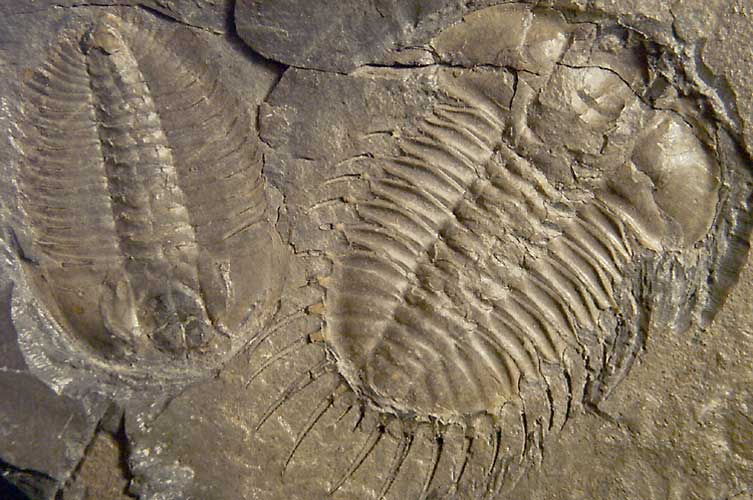 Athabaskia bithus
Athabaskia bithus
Ordovician Period
House Range, Millard Co., Utah.
Copyright 2001 Val & Glade Gunther
Modocia typicalis
Cambrian Period
Wellsville Mountains, Box Elder Co., Utah.
Copyright 2001 Val & Glade Gunther
Pseudocybele altinasuta
Cambrian Period
House Range, Millard Co., Utah.
Copyright 2001 Val & Glade Gunther
Five hundred million years ago life began to flourish and change in ways not seen before on Earth. Long before people and even before the dinosaurs was the Paleozoic Era, when much of the United States, including most of Utah, could be found at the bottom of a warm, shallow sea.
One of those changes was the arrival of a class of animals called trilobites. The word ‘tri-lob-ite’ means ‘one who has three-lobes’ and refers to the way the animal can be organized into three sections, both lengthwise and widthwise. Trilobites were marine animals that occupied various niches in the sea’s shallow waters. These fascinating creatures were incredibly diverse, with individuals from more than 20,000 different species ranging in size from less than half an inch to more than two feet in length. Some species swam free in the open water, either as predators or filter-feeders, while others were restricted to crawling along the sea floor or burrowing down in the mud. Some trilobites could curl up for protection like the modern-day pill bug, with a few even exhibiting skeletal spines and bumps for added defense. Our region seems to have been a hotbed of trilobite development – the Utah Geological Survey reports that more than 500 species of trilobites have been identified from fossils found in Utah alone!
Trilobites were one of the first creatures to exhibit two important traits that eventually became standard for most animal life on earth: complex eyes and multiple appendages for the purpose of locomotion. Although trilobites went extinct around 250 million years ago, their legacy has lasted, not only in fossils, but also through a genetic link to some of their modern-day relatives, including insects, spiders, ticks, crabs and lobsters. Just like these critters, trilobites have been classified as arthropods, due to their segmented bodies, jointed legs, and hard exoskeletons. And like the arthropods we know today, trilobites went through regular molting periods, during which they grew a new exoskeleton and shed their old one. In fact, most trilobite fossils we have today are actually the fossils of molted exoskeletons and not of the animal itself.
For more information and photos of ancient Utah trilobites, visit our website at www.wildaboututah.org. Thank you to the Utah Geological Survey for content assistance, and to the Rocky Mountain Power Foundation for supporting the research and development of this Wild About Utah topic.
For the Stokes Nature Center and Wild About Utah, this is Andrea Liberatore.
Credits:
Photos: Courtesy & Copyright 2001 Val & Glade Guntherwww.geo-tools.com
Text: Andrea Liberatore, Stokes Nature Center, logannature.org
Additional Reading:
Fortey, Richard. 2000. Trilobite! Eyewitness to Evolution. New York: Random House https://www.amazon.com/Trilobite-Eyewitness-Evolution-Richard-Fortey/dp/0375706216
Alles, David L., 2009. Trilobites (web paper). Western Washington University. Retrieved online from: https://www.biol.wwu.edu/trent/alles/Trilobites.pdf


